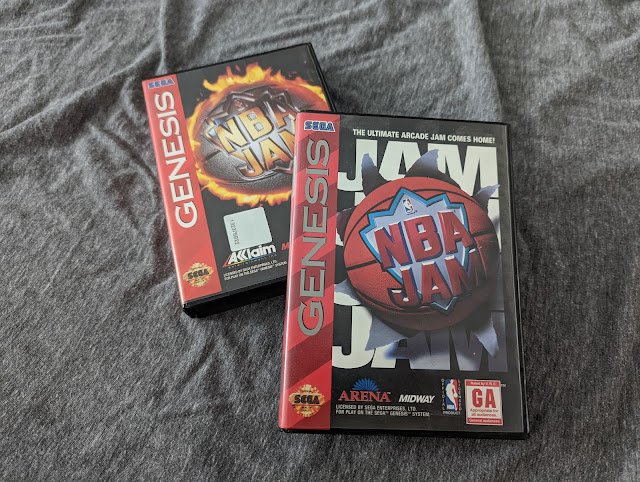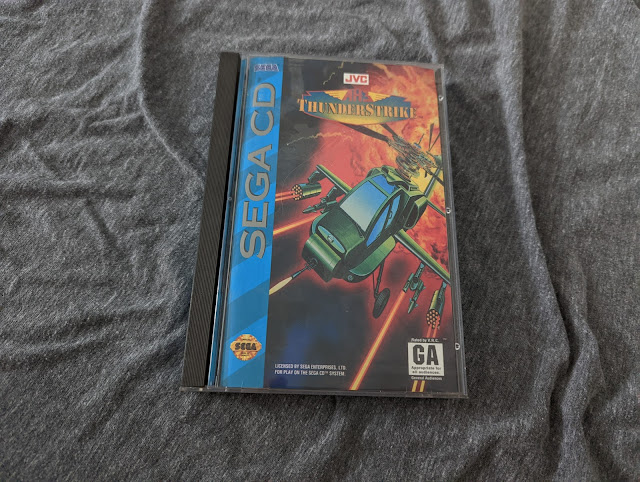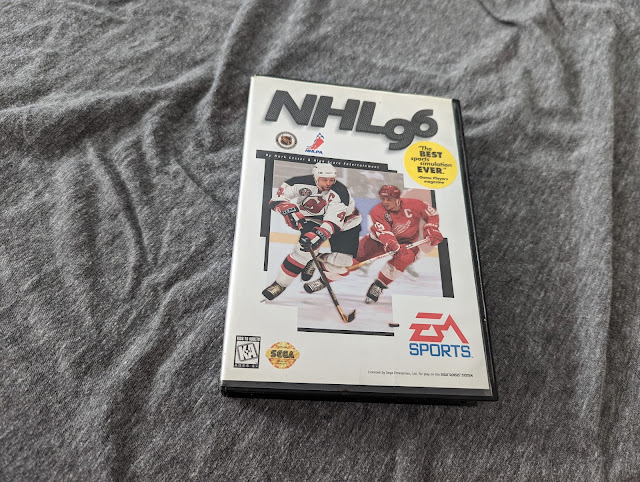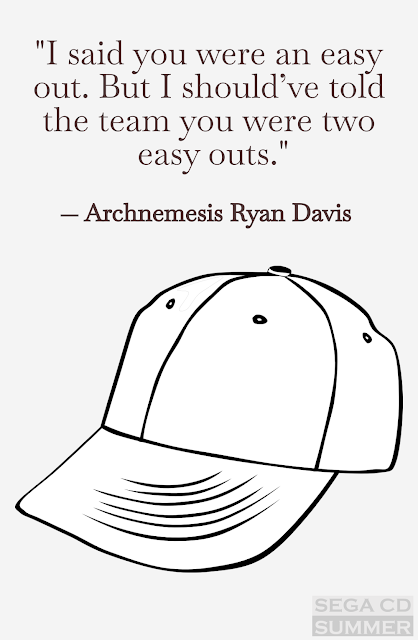Tommy Guggenbiller lives in a world filled with pop culture. He's obsessed with several geeky pursuits and goes frequently to the movies with his father, lover of cinema and popcorn.
Throughout Sega CD Summer, Tommy mentions several movies released during the summer of 1994. Some he'll see and comment on; others he'll reflect upon in retrospect.
I have fond memories of the movies of 1994, something reflected in Tommy's perception. What follows is a non-comprehensive list of some of the movies mentioned in the book. I'm sure I missed one or two.
The Shadow. This already made the list of 5 Superhero Movies I Shouldn't Like But Do Anyway. Tommy goes to see this one with his dad, who describes it as "weird." I think that's pretty on point. Hollywood hadn't gotten anywhere near perfecting the superhero formula and The Shadow was part of the "capitalize on Batman 1989" wave of movies. I love Alec Baldwin in this movie. I love the Shadow's outfit. I even like the bad guy.
But the tone is off, teetering between goofy, self-referential, and serious. The movie never quite decides what it wants to be. I found Penelope Ann Miller's character supremely annoying. I still watch the movie every couple years. It's pretty hilarious how it starts off with Alec Baldwin's character as a Seinfeldian "White Poet Warlord" in an opium den.
I had the novelization as well, as does Tommy in the book. The Phantom tread similar ground in 1996. However, I feel like that movie nailed a consistent, pulpy tone and find it superior to The Shadow.
Ace Ventura: Pet Detective. As an adolescent in the 1990s, I couldn't escape Jim Carrey. In order to survive middle and high school, you had to know something about Ace Ventura: Pet Detective, The Mask, or Dumb and Dumber. Carrey crushed the box office that year with three mega-hits.
Ace Ventura, the first of the three, came out in February and became a surprise hit. Carrey's doofy character was extremely quotable and the movie had some goofball charm and just enough "edginess" (I use that word very, very loosely) to score with the immature middle school/high school crowd.
There are so many quotable lines from this one and the very presence of Dan Marino lends the affair some additional lunacy (he really should stick to Isotoner glove commercials). The big twist was never especially graceful, and it comes off as particularly mean-spirited in 2022.
Still, for a 12-year-old like Tommy Guggenbiller, Ace Ventura: Pet Detective is that forbidden movie he's dying to see only because he knows his mom hates it.
Speed. Good action movies hold up years after their original release, and Speed still thrills. It boasts a stellar cast and some impressive set pieces. Does the logic hold up? Could the bus really make "the jump?" Probably not.
All I know is Dennis Hopper looked like he was having the time of his life, we get a superb game of cat-and-mouse, and it's the first thing I remember seeing Jeff Daniels in (it made Dumb and Dumber all the more surprising).
The movie has a pretty lean runtime (under two hours with credits) and never overstays its welcome. Modern action movies could learn a thing or two from its economical storytelling.
Tommy goes to see this one with his dad.
Tombstone and Wyatt Earp. As Tommy notes in the book, Tombstone is actually a late 1993 release. A terrific western starring Kurt Russell and Val Kilmer, they really don't get much better in the modern western oeuvre. It also has a wonderful supporting cast: Sam Elliott, Bill Paxton, Powers Boothe, Michael Biehn, and Stephen Lang.
You even get appearances from Billy Bob Thornton, Billy Zane, and Thomas Hayden Church. Russell and Kilmer make the movie, though, and it features tons of quotable dialogue.
Tommy recalls seeing this at the theater with his dad and also rents the home video version.
Wyatt Earp actually came out in 1994. It hits many of the same story beats as Tombstone, although Earp is going for a broader overview of the main character's life. It's overly long in that '90s Costnerian way. Dennis Quaid does his best as Doc Holliday, but he's no Val Kilmer because no one is. Kevin Costner is fine in the main role, but he's no Kurt Russell because no one is.
Tommy complains about having to sit through Wyatt Earp because it can't touch Tombstone. I hope he enjoyed some popcorn.
Maverick. Did you know googling for Maverick just brings up a bunch of Top Gun stuff now? It wasn't that way about a year ago. It is now!
Anyway, this 1994 gem directed by Richard Donner features Mel Gibson (charming, '90s era Mel Gibson before The Troubles), Jodie Foster, and James Garner. I find it highly entertaining with some great double-crosses and plenty of sarcastic humor. It has some great cameos, too, with fun villain turns from Alfred Molina and James Coburn.
I grew up on country music, and this movie featured a pair of songs from Clint Black ("A Good Run of Bad Luck") and Tracy Lawrence ("Renegades, Rebels, and Rogues").
It won't tickle everyone's fancy, but it's a fun deconstruction of some western tropes (watch for an incredible turn from Graham Greene as Chief Joseph) filled with some good action, lots of conniving swindlers, and a good sense of humor.
Clear and Present Danger. The events of Sega CD Summer take place before the release of this Harrison Ford action movie based on the Tom Clancy novel of the same name. I remember Patriot Games being the first real "action thriller" I was allowed to watch; that ending scene with the nightvision goggles was pretty intense at the time.
Clear and Present Danger is the sequel, one of what I can only describe as a strange Jack Ryan "cinematic universe" in which Alec Baldwin and Harrison Ford played the same guy, Ben Affleck later stepped into the role in an unrelated movie, and Chris Pine tried a reboot of his own. Then Jim from The Office put his own spin on Jack Ryan thanks to Amazon.
I still remember seeing this one in the theater, which means Tommy also probably saw it in the theater with his dad. I later read the book, which bore little resemblance to the movie. I enjoy Harrison Ford as Jack Ryan, although I understand Clancy did not. Willem Dafoe is terrific as Clark and Donald Moffat really gets to spout off some memorable presidential dialogue.
Other supporting characters include the great Henry Czerny ("You don't have one of these, do you, Jack?") as the smarmy Ritter, Joaquin de Almeida as Felix Cortez ("The machine is still on, Moira"), and Miguel Sandoval as Ernesto Escobedo, the, um "cartel leader with a heart of gold, kind of." Anytime I saw Sandoval in another movie like, say Jurassic Park, I would be like, "Hey, it's Ernesto Escobedo!" He also turned up in "The Little Jerry" episode of Seinfeld.
Star Trek: Generations. Tommy visits a Star Trek exhibit in Muncie, Indiana, during the course of the book. The conceit there is that the exhibit is part of the promotional push for Star Trek: Generations.
The 1994 release teamed up Captain Picard with Captain Kirk, and while that should be exciting, it fell kind of flat. Don't get me wrong, seeing Patrick Stewart and William Shatner together totally worked and the two had great chemistry. It's just that I wish they were in a better Star Trek movie with a better plot and a better villain.
Generations isn't a disaster; it's just not peak movie Trek.
Other notable movies. Really, 1994 had plenty of good movies, some of which Tommy mentions and others he doesn't. The Lion King, Forrest Gump, True Lies, and Angels in the Outfield were all released that year, although Tommy doesn't pay much attention to them.
The Lion King is one of Disney's finest and one of the centerpieces of the Disney Renaissance. Forrest Gump won lots of awards and made a lots of money. True Lies is James Cameron and Arnold Schwarzenegger at the height of their respective powers. And Angels in the Outfield was a heartfelt sports movie--the kind we seldom see these days.
Major League II came out in 1994, and while it wasn't Major League, it gave us Jack Parkman and that wonderful movie trailer for Black Hammer, White Lightning ("Mine fell the hardest." "Mine are the deadest."). The Crow also hit theaters that year. Highly regarded at the time, some people really got into it. I wasn't one of them.
We were also "blessed" with Police Academy: Mission to Moscow, a movie that made sure to squeeze the absolute last drop of blood out of Police Academy's desiccated corpse, and Wagons East!, notable for being John Candy's penultimate role (while he died during filming this turkey, Canadian Bacon actually came out in 1995). Pulp Fiction and The Shawshank Redemption would help restore some of 1994's cinematic dignity.
It probably bears worth mentioning that we got a pair of video game movies in 1994. A terrible Double Dragon movie hit the big screen followed by Street Fighter. I know some people consider the latter to be one of those "so good it's bad" movies, but I kind of think it's just bad, despite Raul Julia's tour de force performance. Like it? No problem. It just didn't hit with me, even ironically.









.png)


























